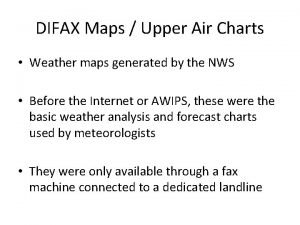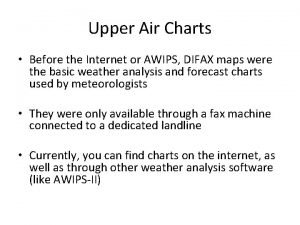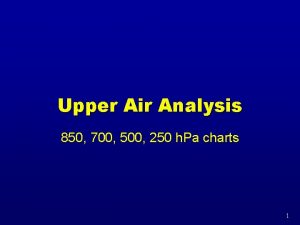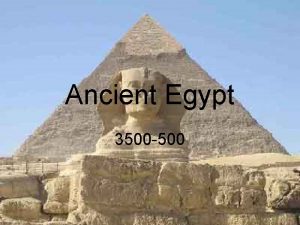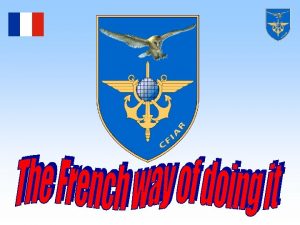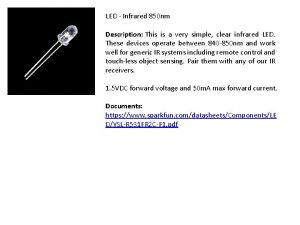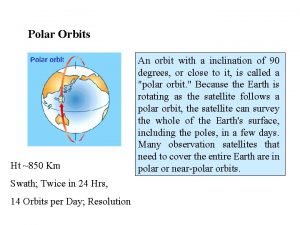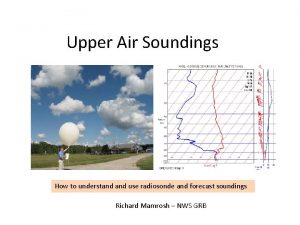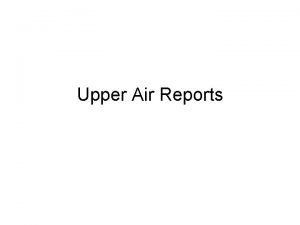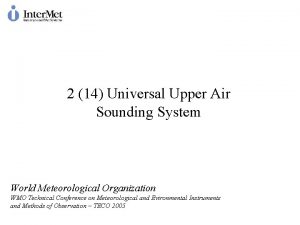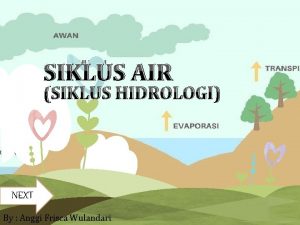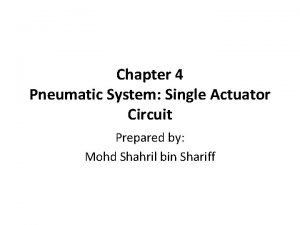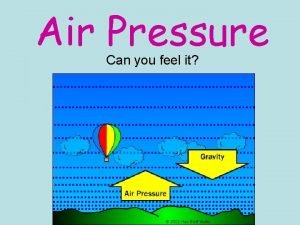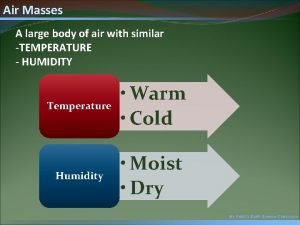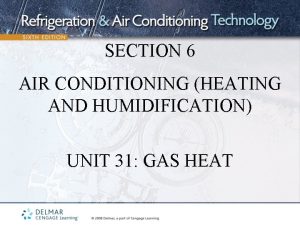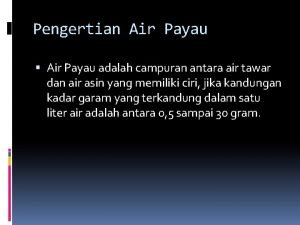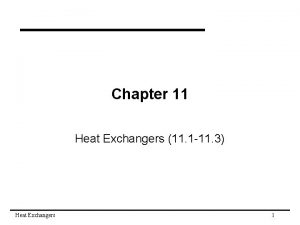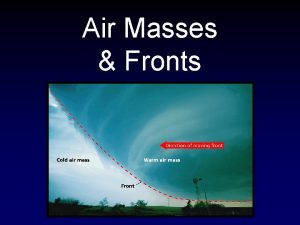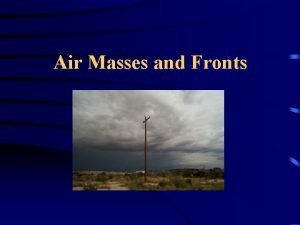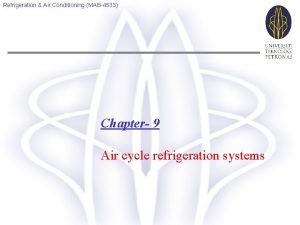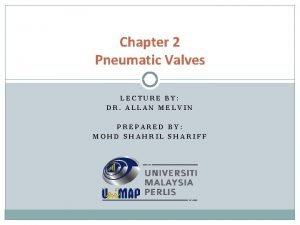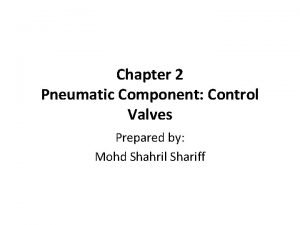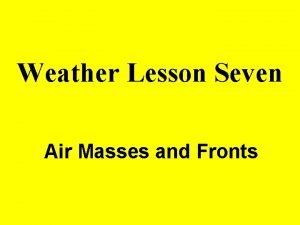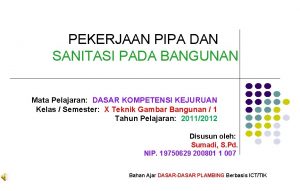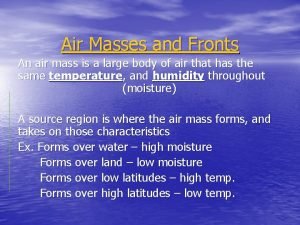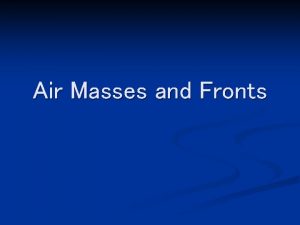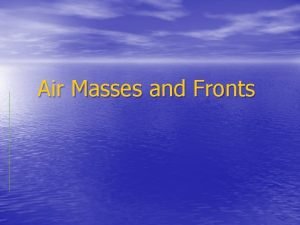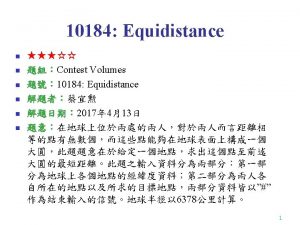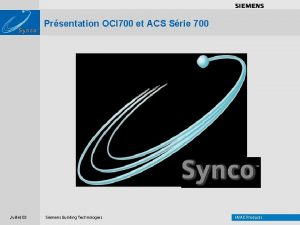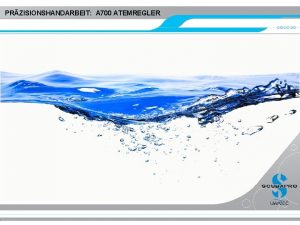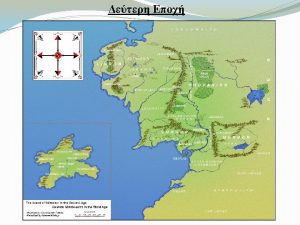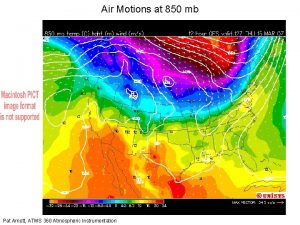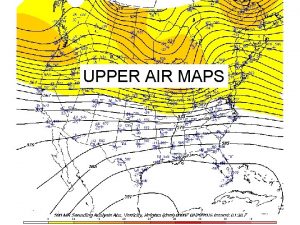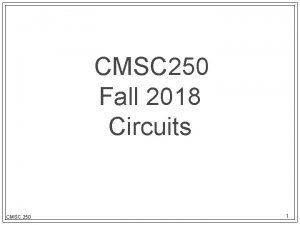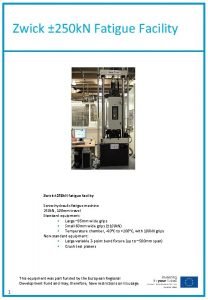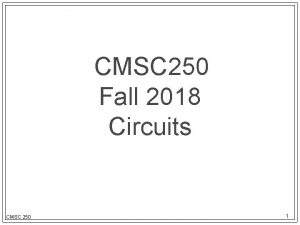Upper Air Analysis 850 700 500 250 h













































- Slides: 45

Upper Air Analysis 850, 700, 500, 250 h. Pa charts 1

Upper Air Charts Objectives • Review Upper Charts • Identify features on Upper Charts 00 Z CMC 850 h. Pa 30 Jul 2008 2

Why use Upper Air Charts? § Weather usually develops throughout the depth of the Troposphere § Most Synoptic weather is actually due to forcing aloft (upper lows/trofs/fronts) § These features are often (but not always) reflected in the SFC analysis § Upper charts are vital in overall analysis (3 -D diagnosis) 3

Upper Air Charts n Data displayed on a “horizontal slice” of the atmosphere n For each radiosonde launch: one data point n Horizontal slice can be taken at various heights of the atmosphere n However instead of heights the norm is to use “constant pressure levels” 4

Why Pressure Levels? § Historically A/C flew at Pressure Altitudes § Still true for flights >18 Tft (no Altimeter recalibration) § Radiosondes report in terms of pressure (height is calculated from other parameters) § Computation is easier using Pressure levels. 5

H 850 h. Pa Pressure Surface > 1500 m < 1500 m L SEA LEVEL 6

L 1380 m L L 1440 m 1500 m 12 Z 29 Jul 2008 850 h. Pa Upper Air Stations L 7

Rejected Data Types of rejected data n Reasons why data is rejected n Discussion n Exercise - find rejected data n 8

Limitations What’s not represented n Friction at low levels n Sharpness/ Smoothing Like Td, heights n 9

What’s typically analyzed The standard Pressure Levels used by most meteorlogical organizations (MSC): 850 h. Pa (near 5000 ft / 1500 m) – Thermal advection, fronts, low level jets, moisture 700 h. Pa (near 10, 000 ft / 3000 m) – Thermal advection, fronts, moisture 500 h. Pa (near 18, 000 ft / 5000 m) – Steering flow, vorticity advection, fronts 250 h. Pa (near 34, 000 ft / 10, 000 m) – Jet Streams n Issued twice daily: 12 Z (14 -16 Z) & 00 Z (02 -04 Z) 10

CMC Upper Air Plots 850 h. Pa T T-Td Examples of height codes: 79 means 1790 metres Height 50 means 1500 metres 24 means 1240 metres 700 h. Pa T T-Td Examples of height codes: Height 30 means 3300 metres 00 means 3000 metres 74 means 2740 metres 11

Upper air plots n n WD - Wind direction (plotted to 36 compass points, or tens of degrees; indicates the direction from whence the wind originates). WS - Wind speed (knots, where a short barb indicates intervals of 5 knots, a long barb indicates 10 knot increments, and a flag indicates 50 knot increments). 12

Upper air plots n TT -Ambient air temperature rounded to the nearest whole °C; "-" for T < 0°C. n DD - Dewpoint depression or spread = T - Td, rounded to the nearest whole °C. 13

K W K 10°C Isotherm 12 Z CMC 850 h. Pa Temperature 29 Jul 2008 16

Exercise n Draw the ___ degree isotherm on 850 n Draw the ___ degree isotherm on 700 18

500 h. Pa charts n 500 h. Pa vorticity n 500 h. Pa thickness 19

CMC Upper Air Plots 500 h. Pa (Vorticiy) Examples of height codes: 75 means 5750 metres T Height 40 means 5400 metres T-Td 500 h. Pa (Thickness) T T-Td 96 means 4960 metres Height Fig. D 1. 2 Plots on upper charts. 20

500 h. Pa Vorticity n n n Troughs and ridges are most easily identified at this pressure level. Clouds and precipitation frequently accompany upper-level lows and troughs, even without surface frontal systems. Shortwave troughs, are often embedded in the Rossby flow, and will propagate at speeds of 20 to 40 knots. Most surface lows and fronts are associated with upper-level short-wave troughs. 22

CMC 500 h. Pa Vorticity Line of constant Vorticity 23

500 h. Pa Thickness § The 534 -540 dam thickness is an approximate RA/SN line § This is indicative of the average temperature of the column of air under the 500 h. Pa pressure level. Larger thicknesses indicate warmer air. 24


W K Line of constant 1000 -500 h. Pa Thickness 00 Z CMC 500 h. Pa 1000 -500 Thkns 30 Jul 2008 26

00 Hr PROG MSLP & 1000 -500 Thkns Valid 00 Z 30 Jul 2008

250 h. Pa or 300 hpa Jet Streams 28

PLOTS ON UPPER CHARTS 250 h. Pa T Height Examples of height codes: 80 means 10, 800 metres 20 means 10, 200 metres 90 means 9, 900 metres T-Td 29

Jet streams Normally, the greatest winds are found above the regions of strongest horizontal temperature contrasts, and hence, in the tightest contour packing. n A “Jet” is often found in segments n – 1, 000 to 3, 000 miles long – 100 -400 miles wide. – 3, 000 -7, 000 feet deep 30

Isotach (constant wind) Plotted for winds ≥ 60 kts 12 Z CMC 250 h. Pa Isotachs 29 Jul 2008 31

Enhancing Upper Charts and Exercises 32

Enhancing 850 h. Pa and 700 h. Pa CHARTS 1. High (blue) & Low (red) symbols 2. 0°C isotherm (red) 3. Areas of moisture: • • Any stations reporting T-Td of 4 or less Highlight the station in Green 4. Areas of Warm/Cold Advection 33

Thermal Advection § Look for areas where the isotherms cross the contours and form closed “rectangles” (solenoids) § An area of thermal advection is bordered by 2 separate Isotherms & 2 separate height contours § The smaller the solenoid the more intense the advection 34

Thermal Advection Identifying advection type (warm or cold): § Look at the height contours: § § find the direction of flow (“Low to your left wind at your back”) the wind will push the isotherms in that direction § If air blows from warm to cold it is warm air advection § If air blows from cold to warm it is cold air advection § Identifying Warm and Cold “pools” will very helpful in this process 35

TEMPERATURE ADVECTION -10 L -5 K H W 15 0 5 10 36

H LW W K L H 850 h. Pa 12 Z W 37

L H LW W L K L 700 h. Pa 12 Z 38

CMC 12 Z 700 h. Pa Analysis L K L H W 40

Enhancing 500 h. Pa Charts § 500 h. Pa is referred to as the “Steering Flow” § 500 h. Pa Vorticity chart: § Analyze S/W Trofs and Ridges 41

250 h. Pa Upper level jets 44

Review Upper Air Charts n 850 & 700 h. Pa – Advections – Moist/saturated stations (T-Td = 4 or less) – 0 degree Isotherm n 500 h. Pa (steering flow) – Vorticity: S/W Trofs and Ridge – Thickness: 534 -540 dam thickness area n 250 h. Pa – Jet Isotachs (>60 kts) – Jet Axis(es) 50

NEXT: Upper Chart Exercise 51

Exercises Highlight the following features on the upper air charts provided: 850 & 700 h. Pa – – – Low/High labels 0°C Isotherm Saturated upper air stations Warm/Cold pools Thermal advections 52

Exercises Highlight the following features on the upper air charts provided: § 500 h. Pa Vorticity chart: § Analyze S/W Trofs and Ridges 53

Highlight the following features on the upper air charts provided: 250 h. Pa – Isotachs – Jet axes 55

Other websites for the description of upper air charts http: //weather. unisys. com/upper_air/det ails. html n http: //www. gis. usu. edu/~av 3250/BMET_ 3250_sp 2001/lab 12/UPPER_AIR_ANA LYSIS_instructions_00. htm n http: //josephbartlo. net/articles/021799. htm n 56

Online tools n Weather. Office http: //www. weatheroffice. gc. ca/canada_e. html n Aviation Digital Data Service (ADDS) www. adds. aviationweather. noaa. gov n Storm Chaser Machine http: //www. stormchaser. niu. edu/machine/ 57

58
 Upper air 850, 700, 500 & 300 mb charts
Upper air 850, 700, 500 & 300 mb charts Upper air 850, 700, 500 & 300 mb charts
Upper air 850, 700, 500 & 300 mb charts 100 200 300
100 200 300 Upper air analysis
Upper air analysis Hubungan air tanah dan tanaman
Hubungan air tanah dan tanaman 3500/500
3500/500 Monique buys a $4 700
Monique buys a $4 700 La ley 850:
La ley 850: 850 volleyball
850 volleyball Toeic score level
Toeic score level Al-khawarizmi (780-850)
Al-khawarizmi (780-850) Ed 850
Ed 850 850 nm
850 nm A bullet travels at 850 m/s
A bullet travels at 850 m/s Ht 850
Ht 850 850 000 steps for dementia
850 000 steps for dementia Upper air soundings
Upper air soundings Upper air report
Upper air report Upper air sounding
Upper air sounding Betonisasi jalan-jalan sanggup mengganggu daur air lantaran
Betonisasi jalan-jalan sanggup mengganggu daur air lantaran Contoh pelarut protonik
Contoh pelarut protonik Exhaust air throttling
Exhaust air throttling Section 1 what causes air pollution answer key
Section 1 what causes air pollution answer key Can you feel it in the air in the air
Can you feel it in the air in the air An air mass is a large body of air with
An air mass is a large body of air with Two cold air masses converge on a warm air mass
Two cold air masses converge on a warm air mass You put your left hand in
You put your left hand in Air atmosfer atau air materai
Air atmosfer atau air materai Is methane lighter than air
Is methane lighter than air Right hand in the air left hand in the air
Right hand in the air left hand in the air Air payau adalah campuran antara
Air payau adalah campuran antara A counterflow concentric tube heat exchanger
A counterflow concentric tube heat exchanger Whats an air mass
Whats an air mass Air masses & frontswhat is an air mass?
Air masses & frontswhat is an air mass? Air cycle process
Air cycle process Supply air throttling
Supply air throttling Quick exhaust valve symbol
Quick exhaust valve symbol What are the seven
What are the seven Measures air temperature
Measures air temperature Peralatan sanitasi bangunan
Peralatan sanitasi bangunan Air mass vocabulary
Air mass vocabulary Chapter 12 air section 1 what causes air pollution
Chapter 12 air section 1 what causes air pollution Cold air mass overtakes warm air mass
Cold air mass overtakes warm air mass Air masses & frontswhat is an air mass?
Air masses & frontswhat is an air mass? Air masses & frontswhat is an air mass?
Air masses & frontswhat is an air mass? Air masses & frontswhat is an air mass?
Air masses & frontswhat is an air mass?
